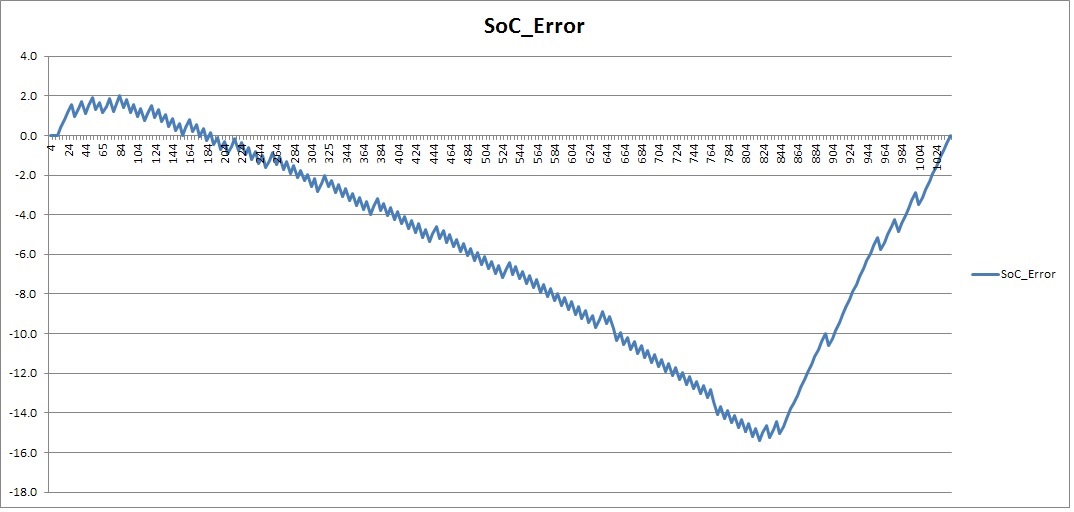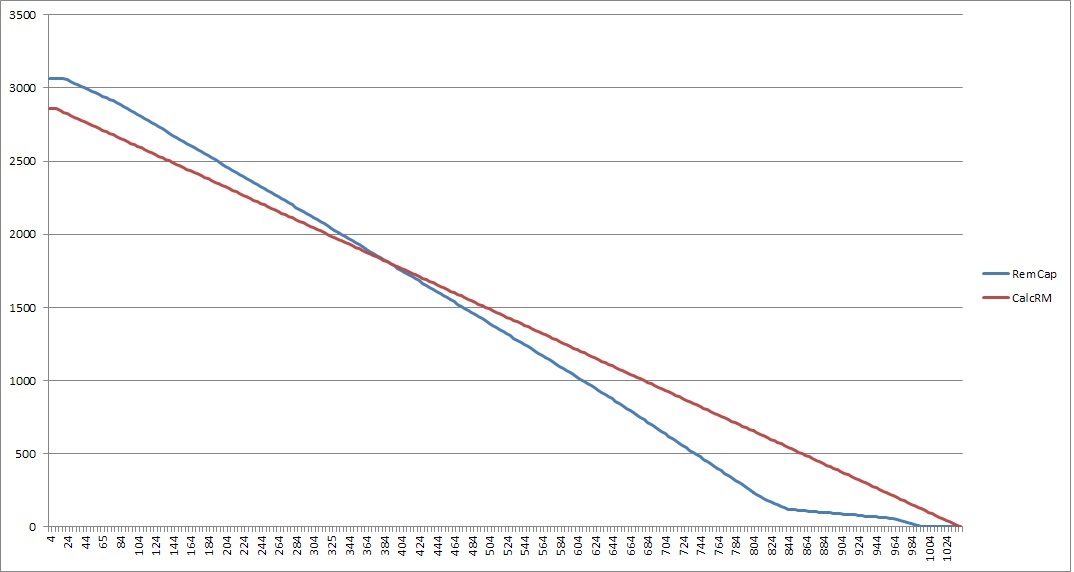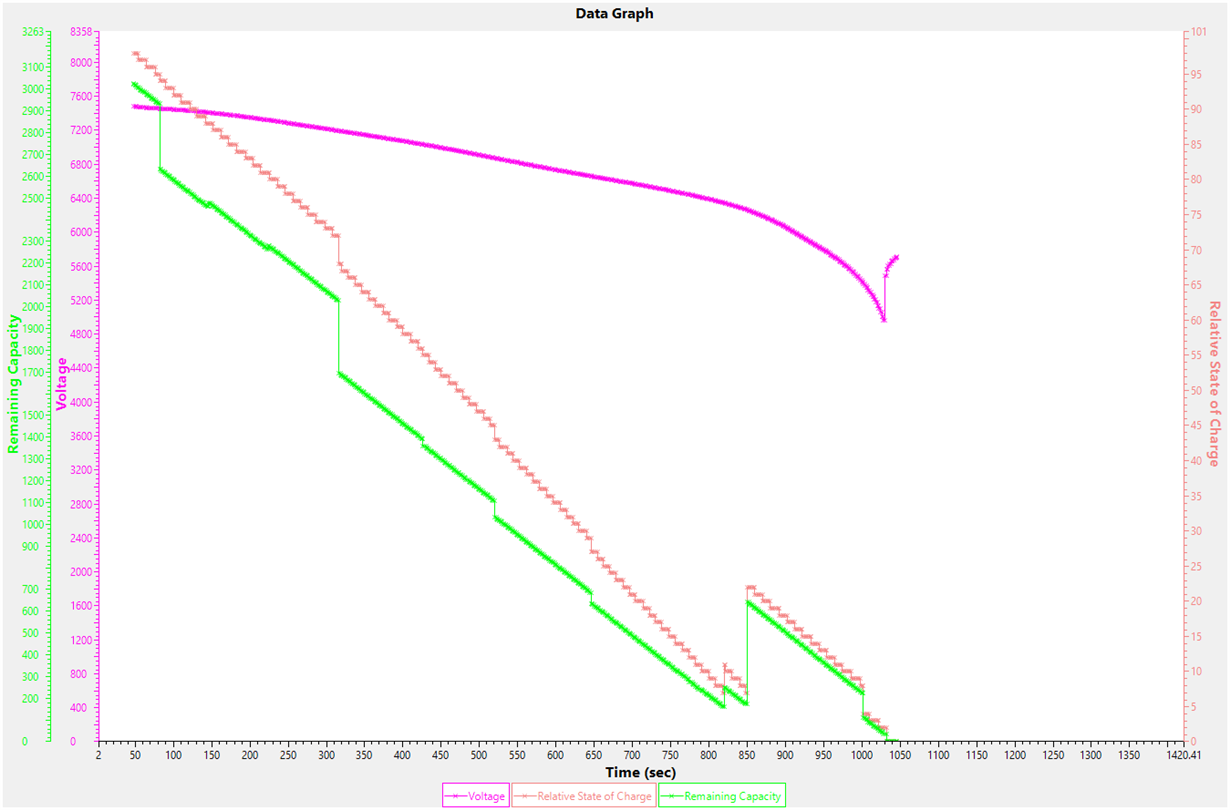Other Parts Discussed in Thread: BQSTUDIO
Hello,
I am testing a 2-cell battery with bq28z610 and Sony US18650VTC6. Chemistry update and learning cycle were done. However, the application current is much higher than the current used during the learning cycle (10A vs 0.6A) and I am seeing a huge error in RSoC, something like 15-20%. I have done controlled discharge with different currents and the maximum error is acceptable at 1A - about 2.5%, at 5A it becomes 8% and at 10A it is 16%. I have noticed a trend that the gradient of the Remaining Capacity curve is always 'pessimistic', i.e. it reduces faster than it should and at the very end (below 10% RSoC) it starts compensating but by that time the huge error has already developed.
Attached are the graphs of the RSoC error and the GG Remaining Capacity vs the calculated one. (Calculations as per the TI E2E™ Community guide How accurate is your battery fuel gauge?)
I am stuck with this problem and I am incline to think that the issue is somehow higher impedance included in the GG algorithm, but have no idea where to look and correct it
Regards,
Peter M







